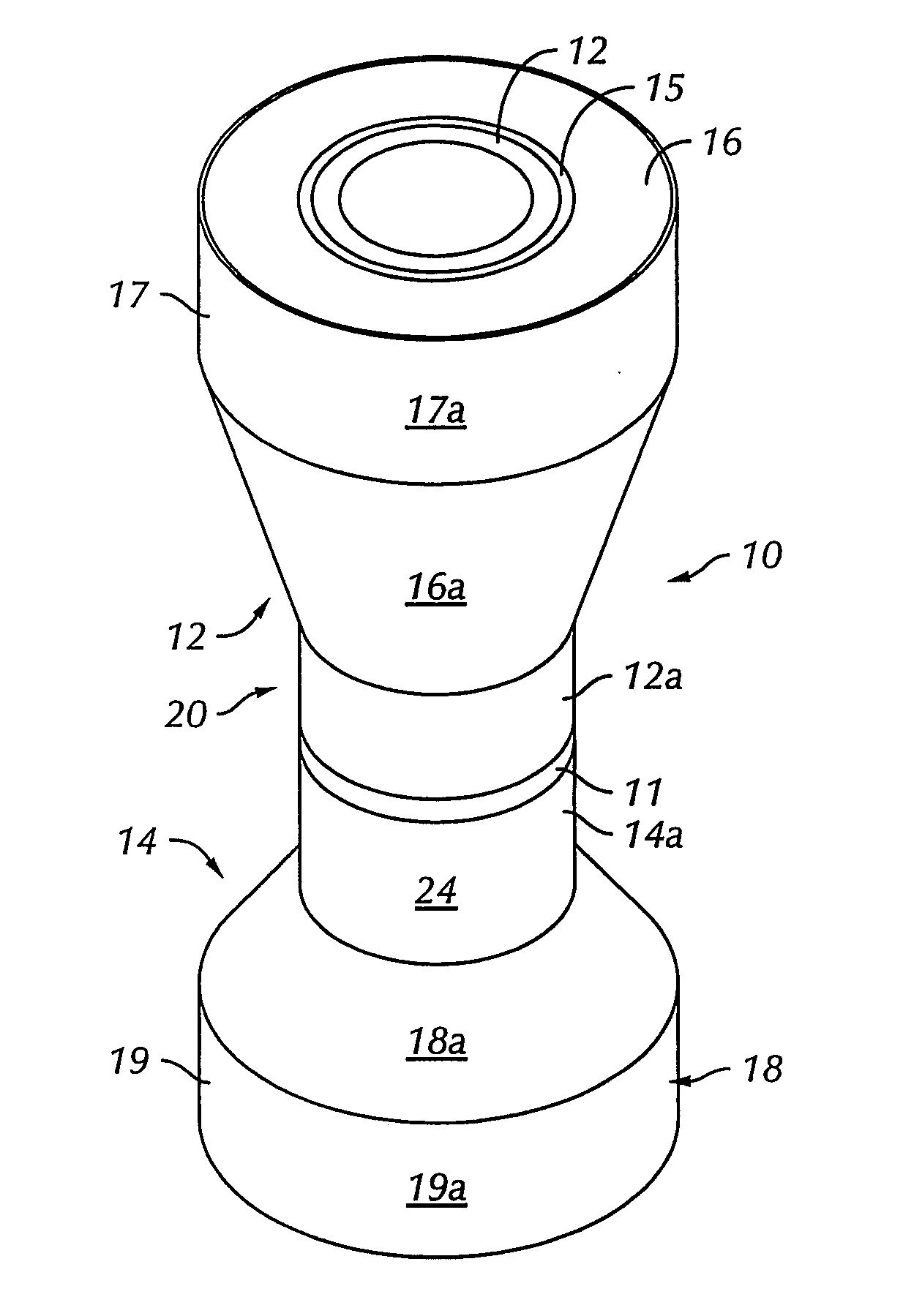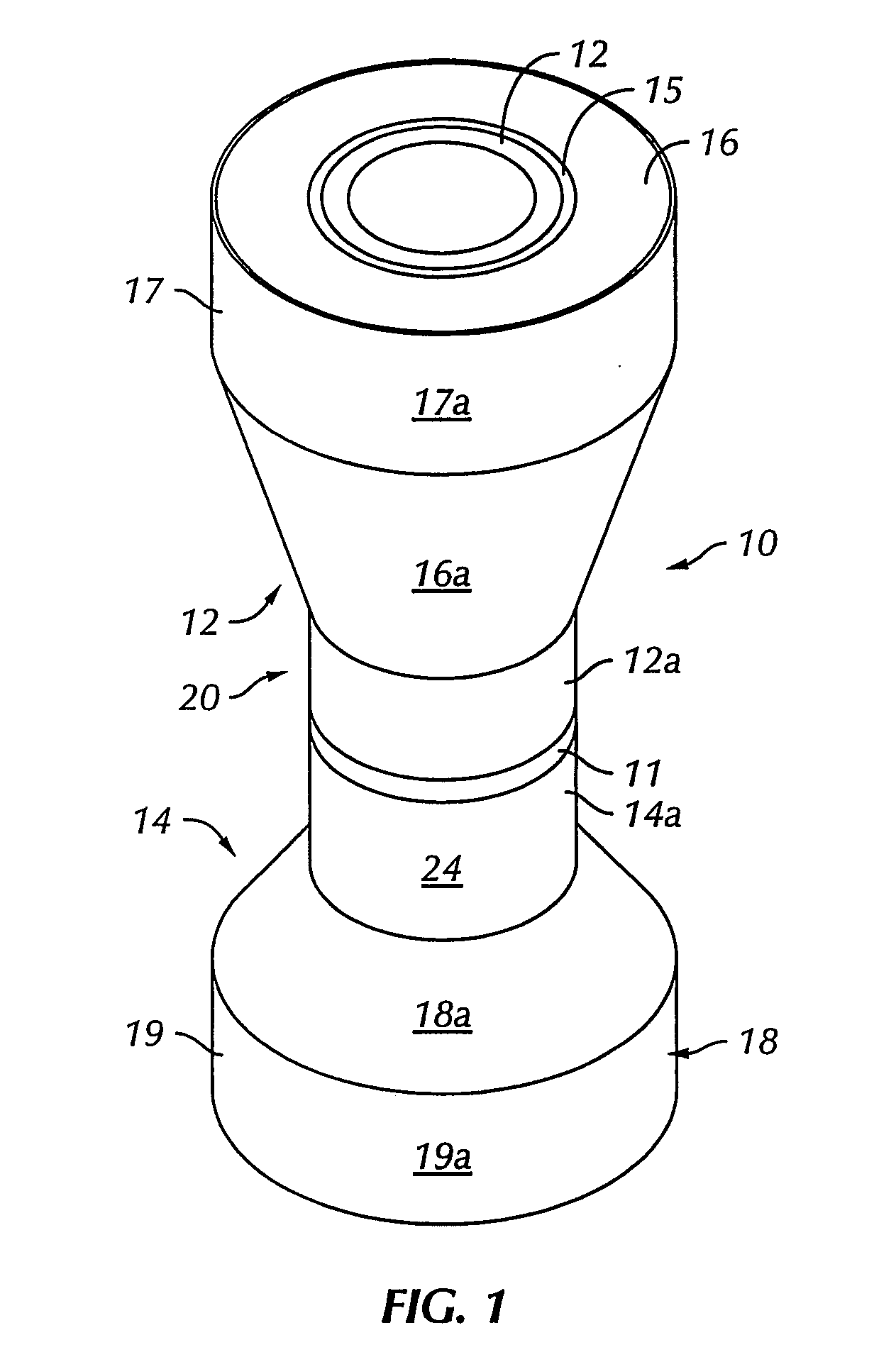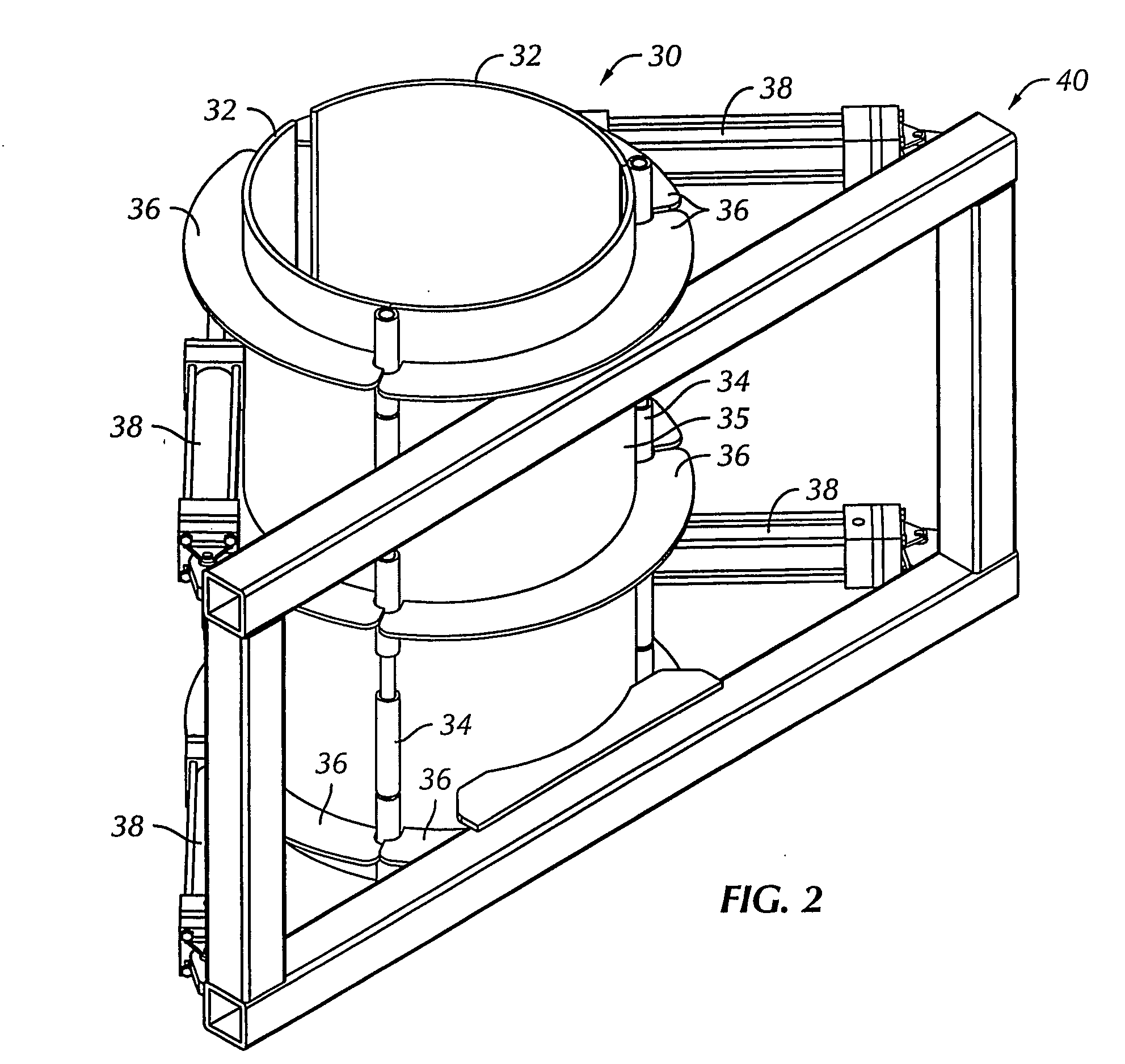Pipeline field joint coating for wet insulation field joints
a field joint and pipeline technology, applied in the field of field joint coating, can solve the problems of difficult design of field joint, difficult to meet the requirements of field joint, and inability to use dissimilar materials, etc., to achieve the effect of preventing any hydrolysis or breakdown of infill material and sufficient strength
- Summary
- Abstract
- Description
- Claims
- Application Information
AI Technical Summary
Benefits of technology
Problems solved by technology
Method used
Image
Examples
Embodiment Construction
[0025] In the drawings, a pipeline 10 is shown (FIG. 1) formed by welding two pipe sections 12 and 14 which are covered by a parent coating 16 and 18, respectively. As shown at 11, the pipe sections. The pipeline 10 is typically one being laid in a relatively deep body of water and is thus shown extending generally in a vertical direction in which the pipeline 10 moves downwardly from a pipe laying barge, J-lay equipment or other suitable vessel into the body of water. It should be understood that the present invention may also be used in connection with S-lay pipeline methods or with reel lay installations, as well. Thus, the pipeline 10 may also extend generally horizontally during the pipe laying operation.
[0026] The parent coatings 16 and 18 associated with the pipe sections 12 and 14, respectively, are formed from a suitable thickness of insulated polymer, such as polypropylene, encased within an outer coat material or cover 17 and 19, respectively, also typically of polypropy...
PUM
| Property | Measurement | Unit |
|---|---|---|
| lengths | aaaaa | aaaaa |
| surface area | aaaaa | aaaaa |
| pressure | aaaaa | aaaaa |
Abstract
Description
Claims
Application Information
 Login to View More
Login to View More - R&D
- Intellectual Property
- Life Sciences
- Materials
- Tech Scout
- Unparalleled Data Quality
- Higher Quality Content
- 60% Fewer Hallucinations
Browse by: Latest US Patents, China's latest patents, Technical Efficacy Thesaurus, Application Domain, Technology Topic, Popular Technical Reports.
© 2025 PatSnap. All rights reserved.Legal|Privacy policy|Modern Slavery Act Transparency Statement|Sitemap|About US| Contact US: help@patsnap.com



